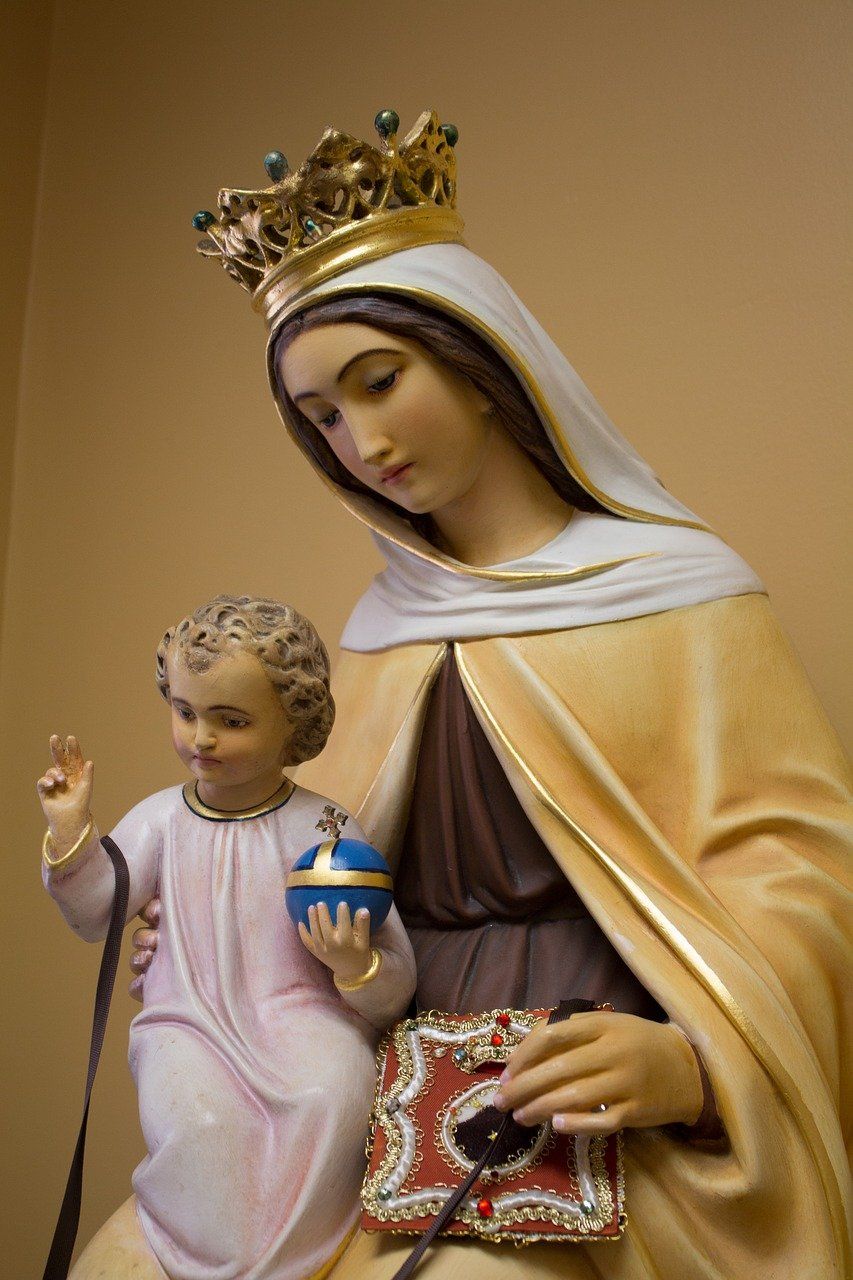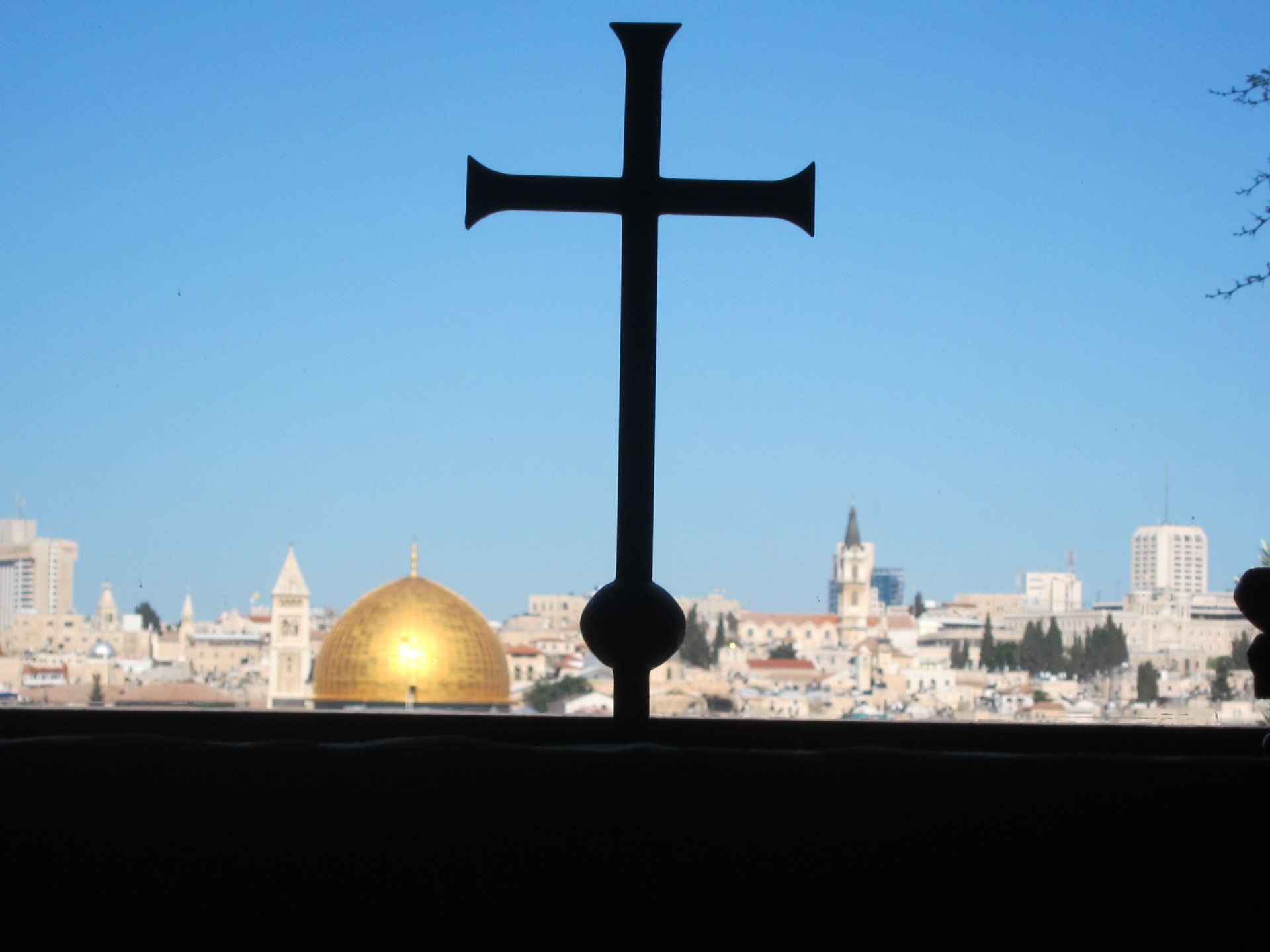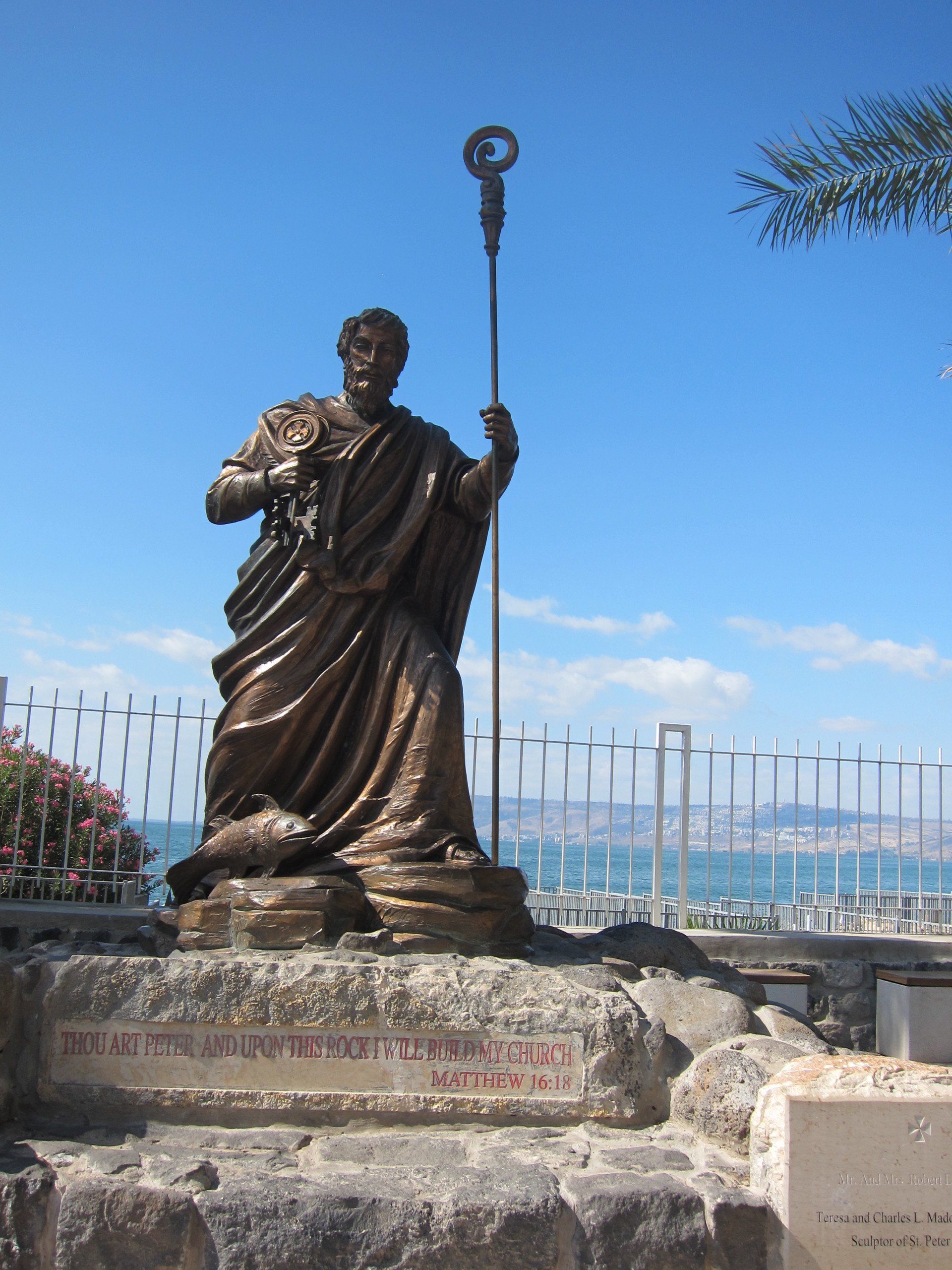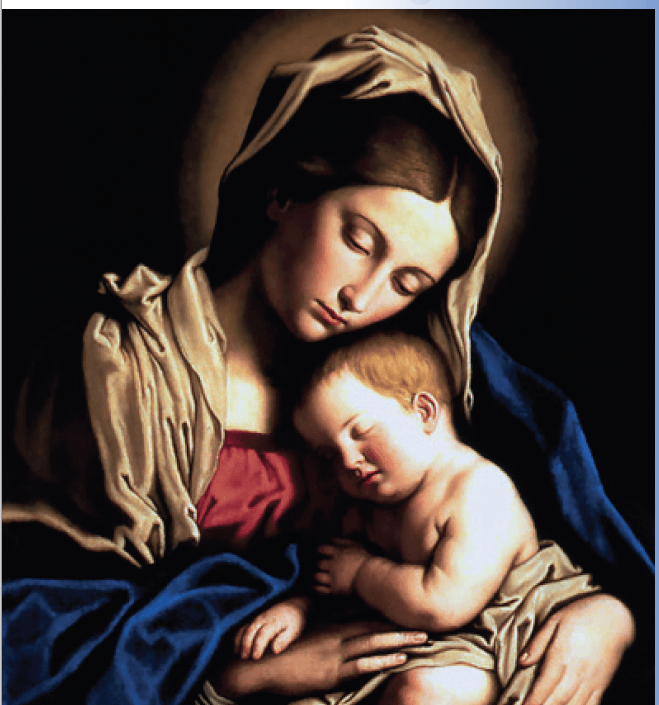MARY IN THE GOSPELS
The Gospels record Mary’s journey from the visit of the angel Gabriel to the death of Jesus on Calvary and on to his Resurrection appearances. Her life and journey has been an inspiration for many Christians. In this article we journey with Mary as we recall the Gospel accounts of her life and how Carmelite saints have responded to these episodes. Prompted by their writings we too look to Mary’s life recorded in the Gospels for inspiration, guidance, solace and encouragement. St Edith Stein wrote ‘There is no better way to serve the Queen of Carmel and to show her our gratitude than by contemplating her example and following her on her way of perfection. Only a few words from the Virgin have come down to us in the Gospels. But these words are like heavy grains of pure gold.
In the Gospel of St Luke the birth and infancy of Jesus are given from Mary’s point of view. Luke records significant episodes in her life, that of her cousin Elizabeth, her husband Joseph and their son, Jesus. These episodes are examples for us to follow in our lives.
At the Annunciation the angel Gabriel was sent to announce the word to Mary, a virgin betrothed to Joseph, and she began to fear the light. He said to her ‘Mary, do not be afraid, you have won the Lord’s favour: You are to conceive and bear a son; he shall be called Son of the Most High.’ Mary responded, ‘I am the servant of the Lord; let it be done to me as you have said’ . In other words, Mary said ‘Yes’. St John of the Cross wrote, The Virgin, weighed With the Word of God, Comes down the road: If only you’ll shelter her.
THE ANNUNCIATION
The Visitation: When Mary heard that her cousin, Elizabeth was pregnant, she ‘arose and went with haste into the hill country, to a city of Judah,’ to visit her. When she arrived Elizabeth cried out with joy and said ‘Why should I be honoured with a visit from the mother of my Lord?’ Mary responds with her prayer of praise to God, her song, her Magnificat. The French Carmelite St. Elizabeth of the Trinity wrote, ‘When I read in the Gospel that Mary “went in haste to the hill country of Judea” to go and fulfil her work of charity towards her cousin Elizabeth, I see her passing by very beautiful, very calm and majestic, recollected within herself with the Word of God’4 .
THE VISITATION
Jesus went with his parents to Nazareth and ‘His mother stored up all those things in her heart’ (Luke 2 51). Towards the end of her life St. Therese of Lisieux wrote a poem entitled ‘Why I love thee, Mary’: ‘Mother full of grace, I know that in Nazareth You live in poverty, wanting nothing more. No rapture, miracle, or ecstasy Embellish your life, O Queen of the Elect! The number of little ones on earth is truly great. They can raise their eyes to you without trembling. It’s by the ordinary way, incomparable Mother, That you like to walk to guide them to Heaven’.5 We have journeyed with Mary in the birth, infancy and youth of Jesus.
MARY IN PUBLIC MINISTRY
Mary was instrumental in the first miracle performed by Jesus at Cana. Although Mary almost certainly did not see much of Jesus’ public ministry as indications are she did not routinely accompany him, she was present at his crucifixion. ‘There was a wedding at Cana in Galilee. The mother of Jesus was there and Jesus and his disciples had also been invited. When they ran out of wine, the mother of Jesus said to him, “They have no wine”. Jesus said, “Woman, why turn to me? My hour has not yet come yet.” His mother said to the servants “Do whatever he tells you” ‘(John 2:1-5). In noticing the predicament of the hosts and in instructing the servants, Mary prompted Jesus to turn water into wine.
The Birth of Christ took place in a stable in Bethlehem, where Mary wrapped her newborn in swaddling clothes and laid him in a manger. The angel of the Lord said to the shepherds who were nearby, ‘I bring you news of great joy. Today the Saviour of the world has been born to you’. They went to visit the newborn and his parents, Joseph and Mary. The mother of Jesus wondered at what was being said about their child. Mary treasured all these things and pondered them in her heart (Luke 1-2). The parents of Jesus took him to Temple in Jerusalem to present him to the Lord. Mary listened as Simeon prophesied that her son was destined to be a sign rejected and that her soul would be pierced. ‘You see this child: he is destined for the fall and for the rising of many in Israel, destined to be a sign that is rejected – and a sword will pierce you own soul too – so that the secret thoughts of many be laid bare’ (Luke 2 34 – 35). We are familiar with Baptism when parents bring their child to the Church; both are dedication ceremonies. A custom was to travel to Jerusalem for the feast of the Passover. When Jesus was twelve he stayed behind and his parents had to go searching for him, finding him in the Temple. ‘Mary said to him, “My child, why have you done this to us? See how worried your father and I have been, looking for you.” “Why were you looking for me?” he replied, “Did you not know that I must be busy with my Father’s affairs?” But they did not understand what he meant’ (Luke 2: 48 – 50).
THE BIRTH OF CHRIST
St Edith Stein (then a laywoman, later a Carmelite nun) when speaking to the Association of Catholic Academics in 1930 said, ‘Mary at the wedding of Cana in her quiet, observing look surveys everything and discovers what is lacking. Before anything is noticed, even before embarrassment sets in, she has procured already the remedy. She finds ways and means gives necessary directives, doing all quietly. She draws no attention to herself.’6 After the wedding feast Jesus went to Capernaum with his mother and his brothers (disciples). On another occasion Matthew, Mark and Luke record that when Jesus was told that his Mother and brothers had arrived and were asking for him He replied ‘here are my mother and brothers, those who do the will of God’. What an inheritance for us! Mary, Joseph and Jesus went to Jerusalem for the Passover when Jesus was young, and now Mary follows Jesus on his last journey through Jerusalem. Though not recorded in the gospels, the Stations of the Cross are part of the tradition of the Church. In one of the stations, Jesus meets his Mother. The Dutch Carmelite, Blessed Titus Brandsma, wrote meditations on a ten day retreat with Mary leading to intimacy with Jesus. ‘Our Lady made the Way of the Cross lovingly and with commitment. We must travel the Way of the Cross with the Bl. Virgin in our everyday life, however not with complaints and laments, rather joyous and enthusiastic to prove the truth of the statement: My yoke is easy and my burden light (Mt. 11.30).’
Near the cross of Jesus stood his mother... Seeing his mother and disciple he loved standing near her, Jesus said to his mother, “Woman, this is your son”. Then to the disciple he said, “This is your mother.”’ (John 19: 25 – 27) John’s response: ‘From that moment the disciple made a place for her in his home’. A Prayer of Intercession states, ‘You gave your mother Mary to be the mother of John’. Thus Jesus gave Mary a new role, as Mother of John (and of course of all Christians), whilst John, the Beloved disciple, gained a Mother. Jesus was providing for them in their time of loss and suffering. In her poem ‘Why I love thee Mary’, St Therese of Lisieux writes: ‘The home of Saint John becomes your home, the son of Zebedee takes the place of Jesus; the last things to be told in the Gospel, and after that nothing more about the Virgin Mary...
But his great silence, dear Mother, Does it not reveal that the Eternal Word himself Wants to sing of the secrets of your life, to bring joy to your children, all the elect of heaven?7 Whether Mary spoke at the foot of the Cross is not recorded, but her presence inspired St Edith Stein to write ‘Beneath the cross the Virgins of virgins becomes the Mother of Grace’8 . Addressing Mary she wrote ‘Today I have been with you at the foot of the cross and I understood with clarity never before experienced that there you became our Mother’.9 We have recalled the life of Mary in the gospels and how her life has inspired and guided the lives of saints. Like these saints we too are inspired by her life and like them we respond to Mary and express our feelings and intimacy as the saints did.
JESUS ON THE CROSS
This is a paragraph. Writing in paragraphs lets visitors find what they are looking for quickly and easily.
This is a paragraph. Writing in paragraphs lets visitors find what they are looking for quickly and easily.
This is a paragraph. Writing in paragraphs lets visitors find what they are looking for quickly and easily.
This is a paragraph. Writing in paragraphs lets visitors find what they are looking for quickly and easily.
No other creature ever loved God as much as Mary loved Him, so there never was any sorrow like Mary's Sorrow





